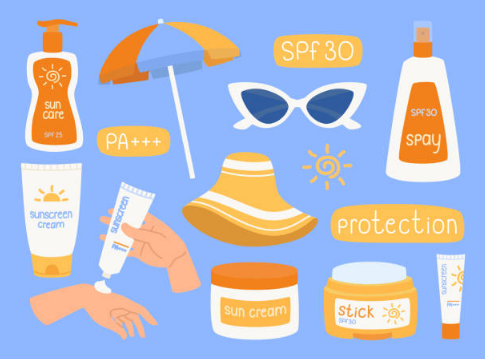If you’re familiar with skincare basics, you probably know how important sunscreen is in your daily routine. But have you ever heard of the “two-finger rule” for applying sunscreen? As you’ll soon learn, how you apply sunscreen is just as important as whether you apply it—getting it right makes all the difference in how effective it is.
Studies show that most people are applying far less sunscreen than they actually need. In fact, a 2014 study found that consumers typically apply only 20% to 50% of the amount needed to get the full SPF protection listed on the bottle. Surprised? Keep reading to learn the proper way to apply sunscreen—and how to choose one that fits your daily skincare routine.

What Are the Benefits of Sunscreen?
Put simply, sunscreen protects your skin by blocking or absorbing UV rays from the sun. But the benefits go beyond that. A quality sunscreen can dramatically improve your skin in ways you may not expect:
-
Evens out skin tone
-
Prevents sunburn
-
Helps treat hyperpigmentation
-
Slows signs of premature aging (like wrinkles and dark spots)
-
Prevents inflammation and irritation
-
Reduces your risk of developing skin cancer
Sunscreen is so effective because the sun can harm your skin in just as many ways. UV damage is a leading cause of aging and skin disease, and sunscreen is the only topical product proven to block those harmful effects. If you’re serious about avoiding skin cancer, photoaging, and pigmentation issues, daily sunscreen is a must.
You can enhance your sun protection even more with protective clothing, wide-brimmed hats, sunglasses, and umbrellas.
If you’re on a skincare budget, experts recommend allocating about 40% of your skincare spending to a high-quality sunscreen. It should always be the last step in your morning routine (after moisturizer). If you’re wearing makeup, sunscreen goes before foundation.
How to Apply Sunscreen Effectively
The two-finger rule is a simple way to measure how much sunscreen you need for your face: squeeze out two strips of sunscreen along your index and middle fingers. That’s the minimum needed for full facial coverage.
To get full protection, your sunscreen should be SPF 30 or higher, and applied to all exposed skin—your face, arms, legs, and any area exposed to sunlight. Since your face is often most exposed, make sure it gets full coverage.
Unlike other skincare steps, sunscreen needs to be reapplied throughout the day, especially when you’re spending time outdoors. The active ingredients in sunscreen break down over time when mixed with skin oils and sweat. So, reapply at least every two hours, and right after swimming or sweating.

How Much Sunscreen Do You Really Need?
More than you think.
To fully protect your skin, you need about 2 milligrams of sunscreen per square centimeter of skin. That works out to:
-
About 1/4 teaspoon for your face, and
-
About 1 ounce (a full shot glass) to cover your whole body.
You should reapply every two hours when outdoors, and more often if you’re sweating or swimming.
When Should You Apply Sunscreen?
Every single day—regardless of the season or the weather.
UV rays can harm your skin all year long, even on cloudy days. And yes, they can still reach you indoors through windows and blinds. Unless you live in a basement with no sunlight, indoor sun exposure is still a concern.
Make daily sunscreen a part of your routine no matter the weather. We get it—reapplying can be inconvenient, especially if you wear makeup. That’s why many people opt for spray sunscreens or sunscreen sticks to make reapplication quicker and easier.
Choosing the Right SPF
SPF 30 is the minimum recommended by the American Academy of Dermatology for daily use. And remember: SPF only works if you apply the right amount.
Don’t be fooled into thinking that SPF 50 or SPF 100 means you can use less or apply less often. Regardless of the SPF number, you still need to reapply and use the recommended amount to get full protection.
The Bottom Line:
Sunscreen is your skin’s best defense against sun damage, aging, and skin cancer. But it only works if you use enough, apply it properly, and reapply throughout the day. Stick with SPF 30 or higher, follow the two-finger rule, and make sunscreen a non-negotiable part of your daily skincare routine.